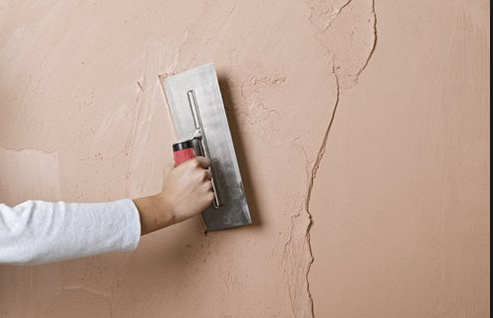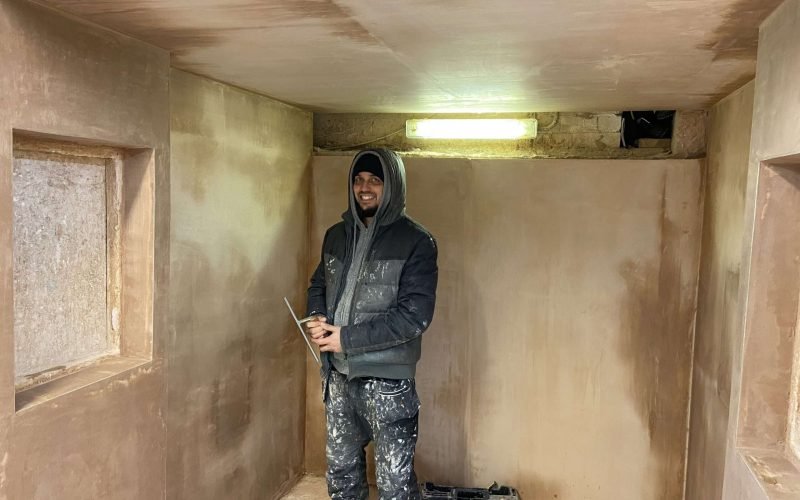Business Plastering: High-Quality Solutions for Workplace and Retail Spaces
Business Plastering: High-Quality Solutions for Workplace and Retail Spaces
Blog Article
A Comprehensive Guide to Mastering Plastering Abilities for Your Improvement Needs

Necessary Devices and Products
Different essential devices serve distinctive objectives, guaranteeing effectiveness and precision throughout the plastering process. A high-grade trowel, for instance, is indispensable for smoothing and applying plaster, while a hawk offers a steady platform for holding the product.
Along with tools, selecting the ideal plastering materials is essential. Gypsum-based plasters are frequently preferred for their versatility and convenience of use, while cement-based choices are ideal for outside applications as a result of their toughness. Water and bonding agents play substantial functions in achieving correct consistency and attachment, guaranteeing that the plaster sticks efficiently to the surface.
Additionally, safety equipment such as gloves, safety glasses, and masks is vital to safeguard versus dust and irritation throughout the application procedure. By assembling the ideal combination of materials and devices, plasterers can improve their capability and produce high-grade coatings, inevitably raising the overall craftsmanship of their job.
Preparing Surface Areas for Gluing
Achieving a smooth and resilient plaster surface begins with meticulous prep work of the surfaces to be smudged. This foundational action is essential to making certain bond and the durability of the plaster. Beginning by assessing the problem of the substrate-- whether it is drywall, concrete, or stonework-- eliminating any loose paint, dust, or particles that may disrupt bonding.
Next, fix any type of imperfections such as holes or cracks. Utilize an ideal filler to achieve a degree surface; this can be critical for protecting against future concerns. As soon as repaired, ensure the surface area is dry and tidy, as dampness can endanger plaster adherence.
For permeable surface areas, it is advisable to use a bonding representative. This product improves bond and develops a trusted interface between the plaster and substratum. If collaborating with formerly plastered surface areas, it might be required to mess up or sand the location lightly to offer a secret for the brand-new plaster layer.
Gluing Techniques and Tips
Grasping plastering techniques needs both skill and method to attain a perfect coating. One necessary method is the application of the plaster in several slim layers, instead than a solitary thick coat. This approach enables much better attachment and minimizes the danger of breaking. Start with a skim coat, ensuring it is uniformly spread out and leveled with a hawk and trowel. Use a straightedge to check for any imperfections prior to carrying on to succeeding layers.
When applying the surface layer, employ a shoveling technique that involves holding the trowel at a minor angle and operating in a round activity. This helps to develop a smooth surface and minimizes the appearance of trowel marks. Additionally, keep a spray bottle of water useful to haze the surface gently; this maintains the plaster workable and enables smoother finishing.
Timing is critical; work efficiently, as the plaster begins to establish. Once the plaster has actually tightened yet is still damp, make use of a hop over to these guys moist sponge to gently smooth the surface further. Last but not least, allow appropriate drying time prior to fining sand or paint, ensuring your effort causes a professional, high-quality surface.
Usual Errors to Prevent

Another usual mistake is applying plaster also heavily. Excitable applications can cause breaking and extended drying times. It's necessary to use plaster in thin, even layers, permitting each layer to completely dry effectively prior to including a lot more.
Furthermore, not using the right tools can impede the top quality of the finish. Utilizing unsuitable trowels or mixers can produce variances in the plastering procedure. Always choose top quality devices created for plastering jobs.
Lastly, lots of individuals undervalue the value of timing. Functioning in improper temperatures or humidity degrees can negatively influence plaster drying out and healing. It is recommended to check climate condition and adjust your routine appropriately.
Ending Up Touches for a Professional Appearance
The lasts of a smudging job are vital for accomplishing a polished, specialist appearance. As soon as the plaster has dried sufficiently, the next action is to examine the surface for blemishes. Minor bumps, openings, or irregular areas ought to be resolved making use of great sandpaper or a sanding block. This precise focus to information is important for making certain a smooth surface.
After sanding, it's a good idea to clean the surface to remove any kind of dirt and particles. A moist towel works for this function, complied with by a comprehensive drying out duration. If essential, using a thin layer of ending up plaster can improve the surface area additionally, supplying a seamless finish.
As soon as the ending up plaster is completely dry, one more round of fining sand may be required to achieve the desired smoothness. Lastly, think about applying a primer prior to painting or wallpapering, which will certainly boost bond and longevity.
Final Thought
Mastering plastering skills substantially enhances the top quality my sources of restoration projects. A detailed understanding of necessary devices, surface prep work, and effective techniques is essential for attaining expert outcomes. Awareness of typical errors permits for the evasion of costly mistakes, while attention to finishing touches ensures a sleek look. Ultimately, the assimilation of these elements adds to the development of smooth, durable surfaces that raise the visual worth of any kind of space, underscoring the value of competent plastering in home improvement undertakings.
Water and bonding agents play significant functions in attaining appropriate consistency and adhesion, making sure that the plaster adheres properly to the surface. Plastering.


In addition, keep a spray container of water convenient to mist the surface area gently; this keeps the plaster practical and allows for smoother ending up. (Plastering)
If required, using a thin layer of completing plaster can enhance the surface area further, providing a seamless surface.
Report this page